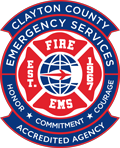Medical Emergencies
Learn First Aid and CPR
Early recognition and activation of 911 for Stroke and Heart Attack Victims saves lives.
By learning how to provide basic First Aid you can know what to do to help in case of an emergency. Additional training to learn CPR and how to use an AED can help make the difference in saving a life.
Stroke
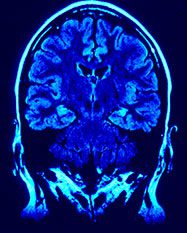 Clayton County Fire and Emergency Services responded to over 300 stroke patients last year (2016). In 2008 Southern Regional Hospital became a Primary Stroke Center and in 2012 began its initial collaboration in addressing stroke care in the community with CCFES.
Clayton County Fire and Emergency Services responded to over 300 stroke patients last year (2016). In 2008 Southern Regional Hospital became a Primary Stroke Center and in 2012 began its initial collaboration in addressing stroke care in the community with CCFES.
Every year about 800,000 people in the United States have a stroke. Stroke is the fifth leading cause of death in the United States and is the major cause of adult disability. Fact on average someone in the US dies every 4 minutes from having a stroke.
Stroke is a medical emergency. Do you know the signs of a stroke? Receiving immediate treatment is important in preventing death and disability from having a stroke.
By knowing the signs and symptoms of stroke, you can be prepared to take quick action and perhaps save a life—maybe even your own.
Signs of Stroke in Men and Women
- Sudden numbness or weakness in the face, arm, or leg, especially on one side of the body.
- Sudden confusion, trouble speaking, or difficulty understanding speech.
- Sudden trouble seeing in one or both eyes.
- Sudden trouble walking, dizziness, loss of balance, or lack of coordination.
- Sudden severe headache with no known cause.
Call 9-1-1 immediately if you or someone else has any of these symptoms.
Acting F.A.S.T. Is Key for Stroke
Acting F.A.S.T. can help stroke patients get the treatment they desperately need. The most effective stroke treatments are only available if the stroke is recognized and diagnosed within 3 hours of the first symptoms. Stroke patients may not be eligible for the most effective treatments if they don’t arrive at the hospital in time.
If you think someone may be having a stroke, act F.A.S.T. and do the following simple test:
F—Face: Ask the person to smile. Does one side of the face droop?
A—Arms: Ask the person to raise both arms. Does one arm drift downward?
S—Speech: Ask the person to repeat a simple phrase. Is their speech slurred or strange?
T—Time: If you observe any of these signs, call 9-1-1 immediately.
Heart Attacks
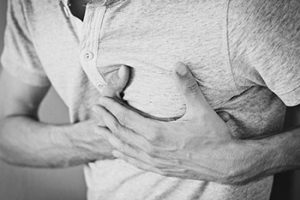 In 2016 Clayton County Fire & Emergency Services responded to 288 Cardiac Arrest Victims and over 11,338 patients experiencing chest pain.
In 2016 Clayton County Fire & Emergency Services responded to 288 Cardiac Arrest Victims and over 11,338 patients experiencing chest pain.
It’s easy to delay action when a heart attack occurs for this simple reason: You may not think it’s a heart attack. A heart attack may also begin with mild pain or pressure in the chest.
Unfortunately, any delay in taking action can mean greater damage to the heart muscle. For the best odds of saving the heart muscle, a heart attack victim must get to the emergency room immediately, where doctors will try to reopen the blocked artery within 90 minutes of arrival at the hospital.
Get to know the heart attack warning signs.
Warning Signs of Heart Attack
Many heart attacks involve discomfort in the center of the chest that lasts longer than a few minutes or that goes away and comes back. It can feel like –
- Uncomfortable pressure,
- Squeezing,
- Fullness, or
- Stabbing pain.
However, NOT ALL HEART ATTACKS ARE PRECEDED BY CHEST PAIN.
Heart attack symptoms include –
- Chest discomfort
- Discomfort in other areas of the upper body: one or both arms, the back, neck, jaw or stomach
- Shortness of breath with or without chest discomfort
- Heartburn, nausea, vomiting, abdominal pain
- Breaking out in a cold sweat
- Dizziness or lightheadedness
Warning Signs of Heart Attack in Women
These heart attack symptoms are more common in women. They may occur without chest pain.
- Sudden onset of weakness,
- Shortness of breath
- Nausea, vomiting, indigestion
- Body aches
- Overall feeling of illness
- Unusual feeling or mild discomfort in the back, chest, arm, neck or jaw (Remember, these may occur without chest pain and still be a heart attack)
- Sleep disturbance
People who have diabetes or are elderly may also experience atypical heart attack symptoms.
If you or someone you are with experiences any of the symptoms above, get help immediately. Don’t delay.
In a heart attack, every second counts. Dial 911 to get to the hospital as soon as possible.
If you can, chew an uncoated aspirin tablet. This can help slow blood clot formation while you wait for Clayton County Fire Department’s (EMTs and Paramedic’s) to arrive in an ambulance. REMEMBER EVERY SECOND COUNTS !
Heat stroke, the most serious form of heat-related illness, happens when the body becomes unable to regulate its core temperature. Sweating stops and the body can no longer rid itself of excess heat. Signs include confusion, loss of consciousness, and seizures. Heat stroke is a medical emergency that may result in death! Call 911 immediately.
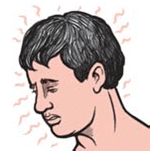
Heat exhaustion is the body’s response to loss of water and salt from heavy sweating. Signs include headache, nausea, dizziness, weakness, irritability, thirst, and heavy sweating.
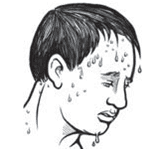
Heat cramps are caused by the loss of body salts and fluid during sweating. Low salt levels in muscles cause painful cramps. Tired muscles—those used for performing the work—are usually the ones most affected by cramps. Cramps may occur during or after working hours.
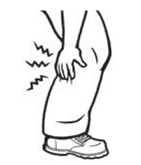
Heat rash, also known as prickly heat, is skin irritation caused by sweat that does not evaporate from the skin. Heat rash is the most common problem in hot work environments.
The chart below shows symptoms and first aid measures to take if a worker shows signs of a heat-related illness.
| Illness | Symptoms | First Aid |
| Heat stroke |
|
While waiting for help:
|
| Heat exhaustion |
|
|
| Heat cramps |
|
|
| Heat rash |
|
|
Get CPR Certified by your fire department.
CPR TRAINING
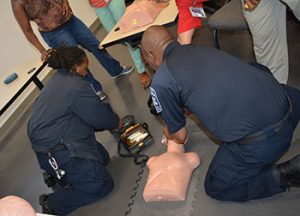 Clayton County Fire and Emergency Services offers CPR Certification Classes for the general public throughout the year. The intent of these classes is to equip citizens with the knowledge and understanding needed during a cardiac emergency. These classes are ADULT only and intended for the general layperson.
Clayton County Fire and Emergency Services offers CPR Certification Classes for the general public throughout the year. The intent of these classes is to equip citizens with the knowledge and understanding needed during a cardiac emergency. These classes are ADULT only and intended for the general layperson.
ABOUT THIS COURSE
The “Heartsaver CPR with AED Course” provides training for adult resuscitation only. The course/class will begin promptly at 9:00 AM, and is approximately 4 hours in duration, including skill verification portion.
Please review our CPR/AED Admission Policy for important details.
First Aid (Coming Soon)
Pulse Point App (Coming Soon)
